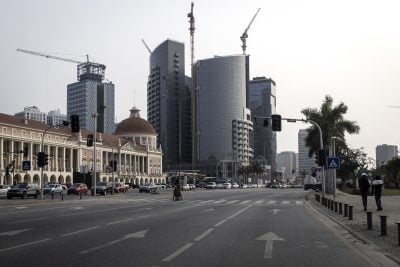The most obvious means of diversifying the Angolan economy is greater cross-border trade with neighbouring states and probably the most important source of cross-border trade will be the revamped Benguela Railway.
In the colonial era, the line was used to transport mining exports from Democratic Republic of Congo (DRC) and Zambia through Angola to the Port of Lobito. However, the line was repeatedly targeted during the civil war and exporters switched to using Durban, Dar es Salaam and other ports in the Southern African Development region.
Luanda has already funded the rehabilitation of the main section of the Benguela line that runs east-west through its territory and this work is now approaching completion. According to the Angolan official state news agency, the Benguela Railway is now operational as far as 20 km from the border with DR Congo.
It is hoped that this will encourage investment in agricultural production in the east of Angola, with exports transported to Lobito via the railway, although a more likely source of anchor income for the railway in the short term will be copper and other mining commodities from the two neighbouring states.
In February, Luanda, Kinshasa and Lusaka concluded a deal for Benguela Railroad (CFB), Société Nationale des Chemins de Fer du Congo (SNCC) and Zambia Railways Limited (ZRL) to jointly maintain and operate the two branches into Zambia and DR Congo. The relevant border crossings will also be redeveloped in order to speed up the processing of cargo.
The Zambian extension will be operated and probably also developed by South African firm Grindrod and Northwest Rail Company (NWR) of Zambia, although the government of DR Congo has not yet revealed whether state, private sector rail or mining investors will develop the DR Congo extension.
The Angolan Transport Minister, Augusto Tomás, announced in February that 120bn kwanzas ($1.247bn) will be invested in the Port of Lobito to complement the rail redevelopment, including in container, dry bulk and fuel facilities, although it is not yet clear how much of this money will be provided by the private sector.
Tomás said: “This investment will make the port of Lobito more competitive, provide it with greater capacity and safety as well as making it a more active player in the internationalisation of Angolan companies and the Angolan economy.”
The government hopes that Lobito will benefit from the investment in the same way as Luanda has taken advantage of its own upgrade. The volume of cargo handled at Luanda increased by 10% last year to more than 11m tonnes. Perhaps even more importantly, the volume of containerised cargo jumped by 23% to 913,000 TEU (20-foot-equivalent units, the standard size of container) with non-containerised cargo falling by 16% on the previous year. This switch to containerised cargo is vital for port and trade efficiency, as it allows cargo be unloaded more quickly and then transported around the country by either rail or road.
In addition, an inland container terminal close to the capital, which has annual handling capacity of 200,000 TEU a year, allows containers to be sorted away from the port.
Luanda is operated by Sociedade Gestora de Terminais, which is owed by APM Terminals and Gestão de Fundos. It currently handles 70% of all Angolan non-oil cargo, but this figure is likely to fall as a result of the expansion of Lobito.
Shipping hub ambitions
Luanda is now one of the biggest container terminals on the Gulf of Guinea but a new container terminal is to be constructed just 50 km north of the Angolan capital at Barra do Dande. The new port will have deepwater berths, allowing access for much larger vessels, unlike Luanda itself, which has a depth alongside of just 9.5 metres. As a result, containers currently often arrive at Luanda on feeder services from ports such as Ngqura in Eastern Cape Province of South Africa. For all the talk of Nigerian ports seeking to become the dominant transshipment port on the Gulf of Guinea, Barra do Dande could be an interesting alternative bet.
Transport investment has focused on the country’s three east-west railways and their respective ports. However, in March, the governments of Angola and Namibia agreed to construct a 300-metre floating bridge over the River Kubango to link the Angolan province of Kuando Kubango with Namibia to the south.
Under the national 2013–2017 Strategic Development Plan, 4,000 km of roads will be surfaced in Kwando Kubango in order to ease trade within the province and between it and other regions. The new bridge should therefore ease trade with Namibia, although it remains to be seen whether it can be used for a sizeable volume of exports as well as imports.
Want to continue reading? Subscribe today.
You've read all your free articles for this month! Subscribe now to enjoy full access to our content.
Digital Monthly
£8.00 / month
Receive full unlimited access to our articles, opinions, podcasts and more.
Digital Yearly
£70.00 / year
Our best value offer - save £26 and gain access to all of our digital content for an entire year!
 Sign in with Google
Sign in with Google 


